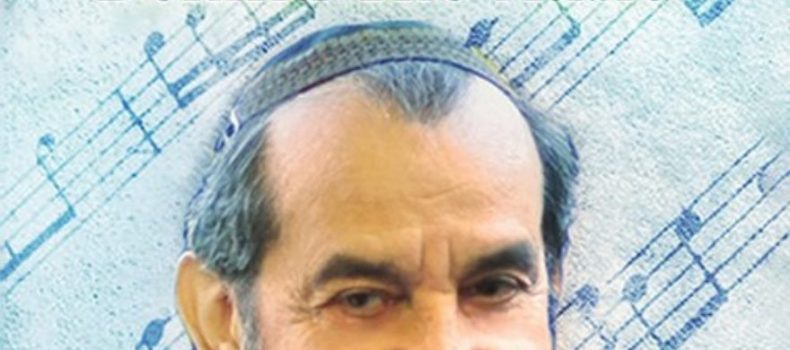Behind the Music: Stories, Anecdotes, Articles & Reflections;” by Velvel Pasternak: A book that goes behind the scenes of Hasidic musical heritage
By Rabbi Jack Riemer
You don’t need to be a scholar of Jewish music to enjoy Velvel Pasternak’s new book, “Behind the Music: Stories, Anecdotes, Articles & Reflections.” You just need to be someone who wants to learn about the adventures of the author, a man who has done more than anyone else in our time to discover, record and transmit the treasures of Hasidic music.
Velvel, as everyone calls him, tells wonderful stories about his experiences—stories that will make you laugh, but also help you learn what lies behind some of the songs you think you already know.
How did Velvel get into the work of transcribing and recording Hasidic music? Once one of the children of the Bobover Rebbe came home from school singing a niggun (tune). When his father asked him where the niggun came from, the child had no idea it was his grandfather’s melody. That was the day when the Bobover Rebbe realized his family’s musical heritage needed to be recorded or it would disappear, and Velvel got the job.
Velvel’s first album was a bestseller—much to his surprise and to the Hasidim’s surprise. He went on to publish many more albums, rescuing treasures of Hasidic music that might otherwise have disappeared.
My favorite story from the book relates to a request from Rabbi Laizer Halberstam that Velvel’s recordings be “autentic” (how the Hasidim pronounced authentic). Velvel had no idea what “autentic” meant to the the Hasidim. He gathered a crew of 15 professional cantors to be the choir. The first song he chose was “Siman Tov U’Mazel Tov,” which is sung at many Jewish weddings. He dutifully transliterated it, using the Bobover dialect to please Rabbi Halberstam, who had come along that night to make sure the recording would be “autentic.” But when the choir got to the words “yihai looney”—meaning “it will be to us” in English and more commonly pronounced by its Hebrew dialect, “yehei lanu”—they broke up in laughter and could not continue. They tried several times, but the same thing happened. Finally, the members of the choir went over to Rabbi Halberstam and tried to explain to him why they simply could not sing “looney” without laughing.
Rabbi Halberstam listened politely and said, “Let me tell you a story.” He recounted how the cultural ambassador of the Ivory Coast once went to his counterpart, the cultural ambassador of Israel, and suggested they have a cultural exchange. The nations could send each other their singers and dancers, but with one condition: The Ivory Coast’s dancers would dance naked “from here to here,” said the African nation’s envoy, drawing a line from his shoulders to his waist. The Israeli ambassador was shocked. He said, “No way! If I were to let you do that, the minister of religion would hang me from a tree, and his people would throw stones at me as they passed by!”
The Israeli ambassador offered a compromise. He said, “You can wear whatever you want in your own country. But when you land at the airport here, I will be there and I will give you shmattes (rags) that you can put on and that you can wear while you are in my country.” The Ivory Coast ambassador replied that if the dancers were to wear the shmattes, they might be able to dance well, but they would not be authentic.
Then Rabbi Halberstam told the choir regarding their unwillingness to sing “yihay looney” in theBobover pronunciation, “If you change the pronunciation of our song, it may sound nice to you, but believe me, it would not be authentic to us. And if the people of the Ivory Coast understand what is authentic, then you should too.” That ended the discussion. The cantors sang “yihay looney,” after all.
The book is full of such stories. It contains fascinating material on some of the songs whose origins you think you know, but don’t. Do you know where Naomi Shemer got the idea for “Jerusalem of Gold?” Or where Naftali Herz Imber got the music for “Hatikvah,” Israel’s national anthem?
“Behind the Music” is enriched with some wonderful photographs and tells readers where to find performances of every song the author discusses on YouTube. Even if you think you already know Jewish music, this book is worthwhile for the insights it provides into the worlds of Hasidim, classic Jewish cantorial music and Yiddish theater. And perhaps most importantly, you’ll get to know Velvel, the man who recorded a heritage and saved it for a new generation.

